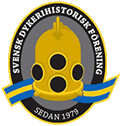This is a shortened version of our Swedish website. Only the most popular pages are translated.
The diving tank house (Dyktankhuset) located at Galärvarvet, Royal Djurgården in Stockholm, between the Vasa Museum and the Alcohol Museum, is the heart of the association’s activities. Our purpose is to spread knowledge about diving from older times through various activities, collect objects, manuals/technical descriptions and document everything that has had and has significance for the development of diving. We hope you will find our website interesting and entice you to visit the Diving Tank House to gain more knowledge about diving in a historical perspective, in the present and in the future. The diving tank house is under the government authority The Swedish Maritime and Transport History Museums, SMTM.

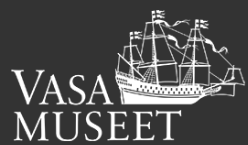



Did you know that you can book special viewings? Write to us and tell us about your wishes.
Latest news from SDHF
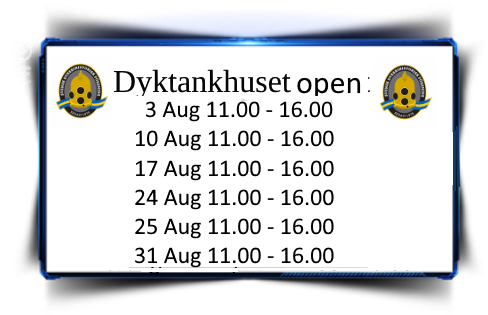
Saturday open in Dyktankhuset
Thanks to our friends at the wreck museum, we will be able to keep the Diving Tank House open 11 – 16 every Saturday in August.
The birthday party
At the end of May, the Swedish Diving History Association celebrated its 45th birthday.
Thanks to the association, Dyktankhuset was also able to celebrate its 90th anniversary. Association
was formed to save the house from being demolished and it succeeded. The association thus became probably the world’s oldest diving historical association!
In glorious summer sun and heat, around thirty guests gathered in the tent outside
The diving tank house and was told by Hans Örnhagen (one of the “rescuers”) the fascinating story of how it happened. You can read about this yourself at About Dyktankhuset
A toast was made to both the house and the association, and they enjoyed themselves
the specially ordered cakes.
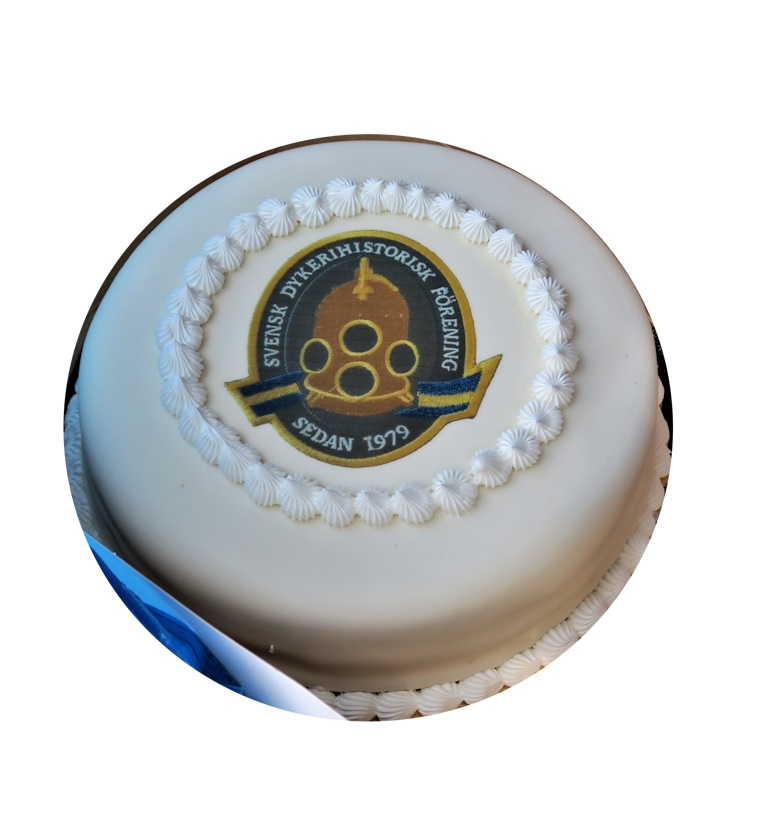
Photo: Björn Axel Johansson
In the afternoon, the party moved to Vrak – Museum of Wrecks to listen as the Chairman of the British Diving Historical Society, Mike O’Meara, told about the salvage of roughly 400 gold bars from HMS Edinburgh in 1981. One real feat. The evening passed in pleasant company with good food and drink. Our club master arranged as usual so no one left the party hungry.
The diving tank house
During the spring, the house received a nice refresh. The outer wall of the old boiler room has been repaired and polished and is now as good as it gets new despite the years. Likewise, the stairs down into the water, where our deep dives take place, have been renovated. The ice had caused it. We thank the Swedish Maritime and Transport History Museums, SMTM, for this.
Take me to Sweden
Do you love Sweden? Do you like Dyktankhuset? One who does both is Belgian blogger Heidi Vandenbussche. She has a blog called Take me to Sweden (https://www.takemetosweden.be/nl/ ). It is also available in English, (https://www.takemetosweden.com). However, the English does not have everything that is in the Belgian. Heidi’s blog is a gold mine for those who want to discover Sweden’s sights and of course she has blogged about the Dive Tank House. With Heidi’s permission, we reproduce here the article about the Diving Tank House in a translated version and Heidi, we love your stories about Swedish sights and customs.
Dyktankhuset, a must-see museum for divers
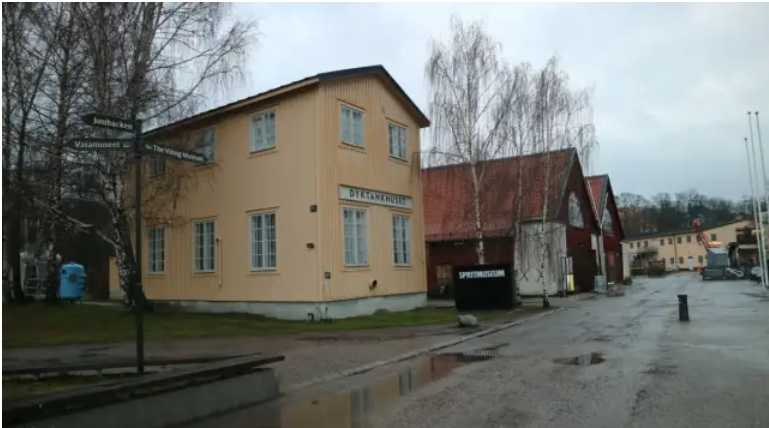
On Djurgården (the green island where the Vasamuseet is located, there is another must for divers!) a small museum, a bit hidden away, which will make many divers’ hearts beat faster. I’ve passed by there before, but I’d never noticed the museum. Until I came across the sidewalk sign. The diving museum is run by volunteers and the opening hours vary.
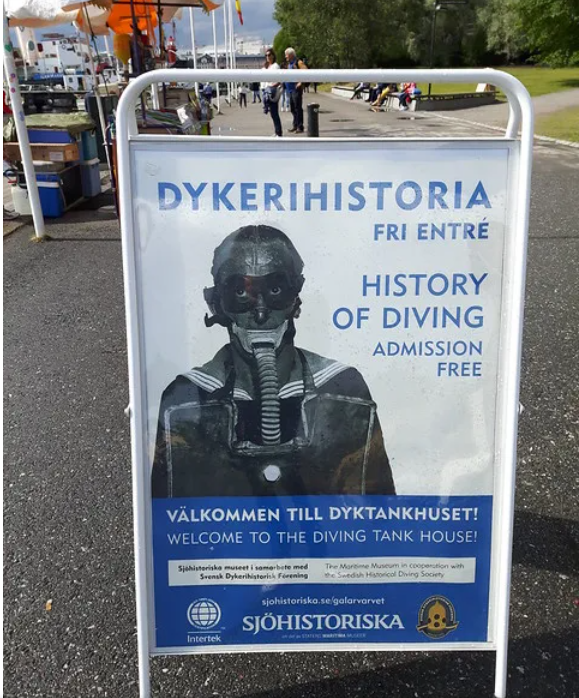
The Swedish Diving Historical Association runs the museum. Don’t expect a hip and modern museum, but that may be the charm of this small museum. You can see how we used to dive, visit a training tank (diving tank) from the Swedish Navy and see hundreds of diving equipment up close. Entry is free and you get a passionate explanation. The ice was immediately broken when I mentioned that I was also a diving instructor and a big wreck diving enthusiast. I, in turn, would like to take you through the museum.
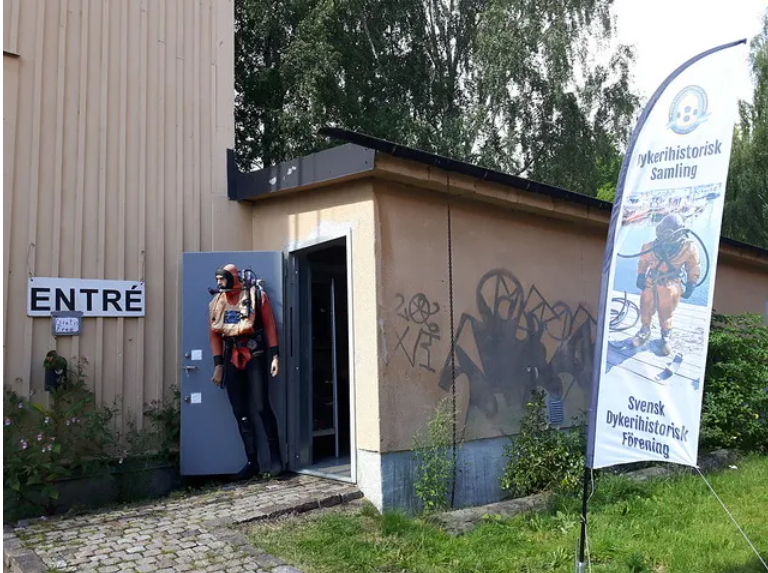
Dyktankhuset
The museum is named after the large diving tank in the house. This military tank was built in 1934 for the Swedish Navy. In this tank, the crew of a submarine could learn how to evacuate from a sunken submarine.
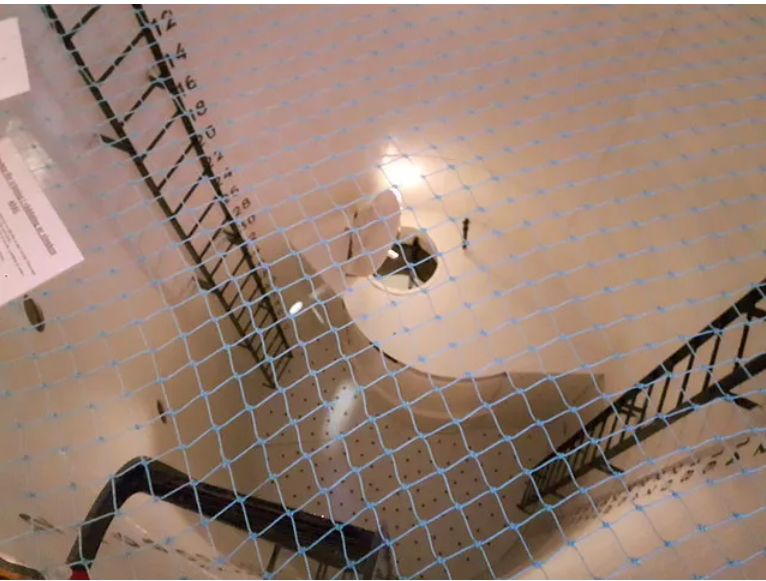
The house also contains a pressure chamber where decompression sickness could be treated and where diving-related experiments could also take place. For 45 years, this was the place where, among other things, tests with hydrox by Arne Zetterström and tests with ACSC (Alternating Closed and Semi Closed Breathing System) for the Swedish Navy were done.
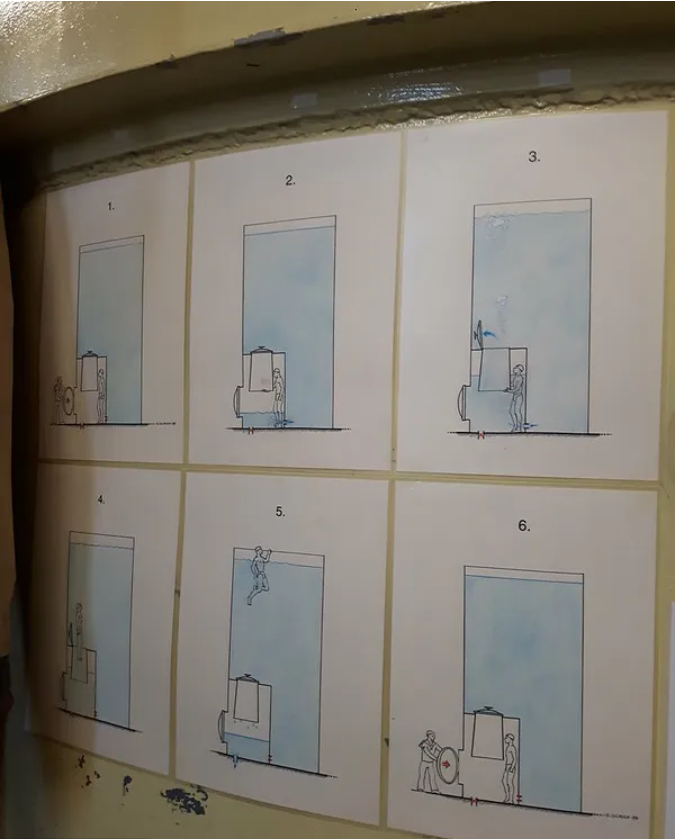
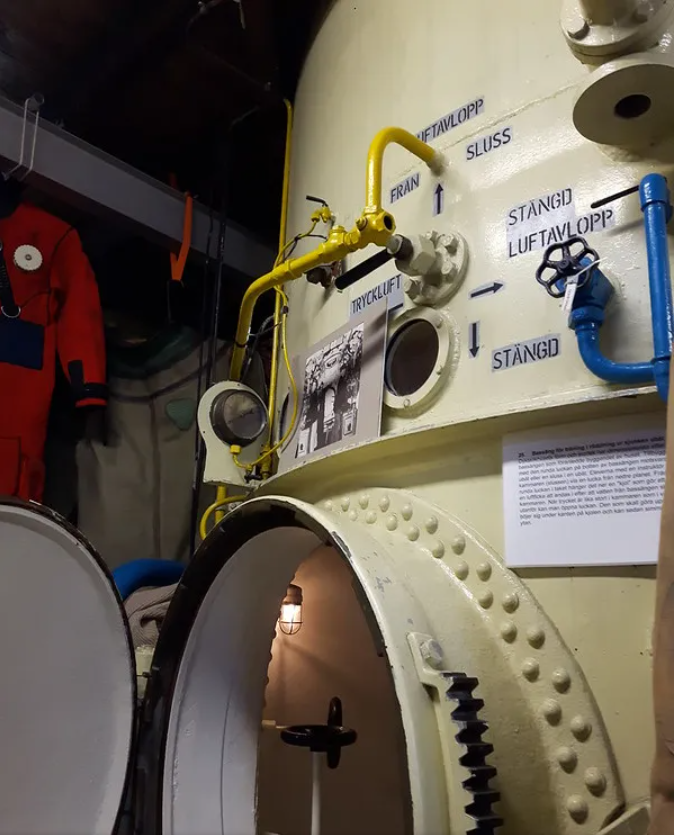
In 1979 the diving laboratory moved to Hårsfjärden south of Stockholm. In order to prevent the Dyktankhuset from being demolished, some diving enthusiasts founded the Swedish Dykerihistorisk Förening and decided to convert the house into a museum. Since 1999, the Swedish Diving History Association has collaborated with the State Maritime Museum.
The diving tank house’s collection
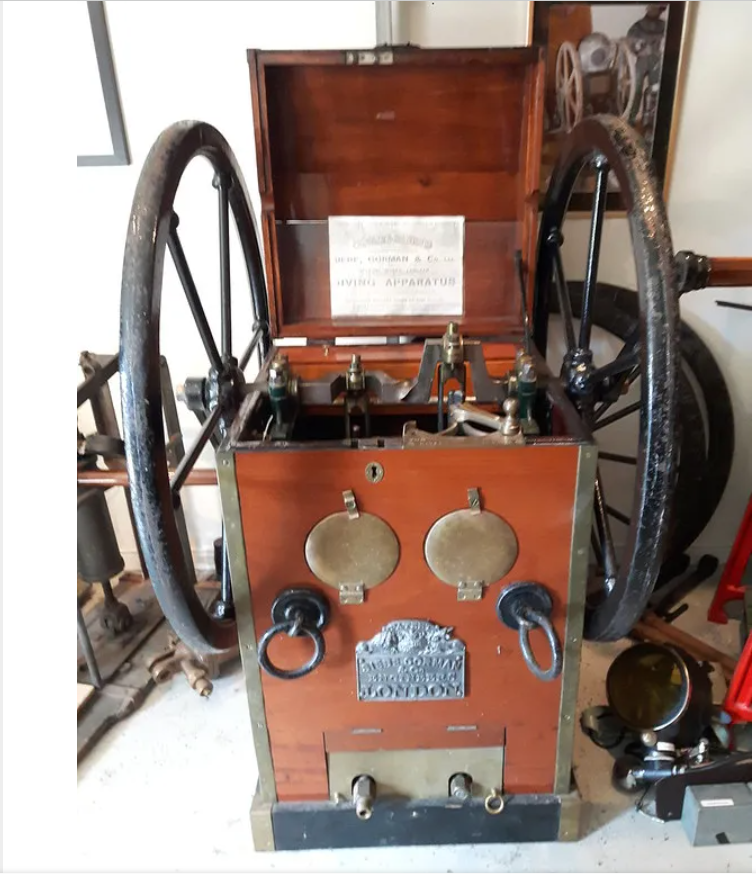
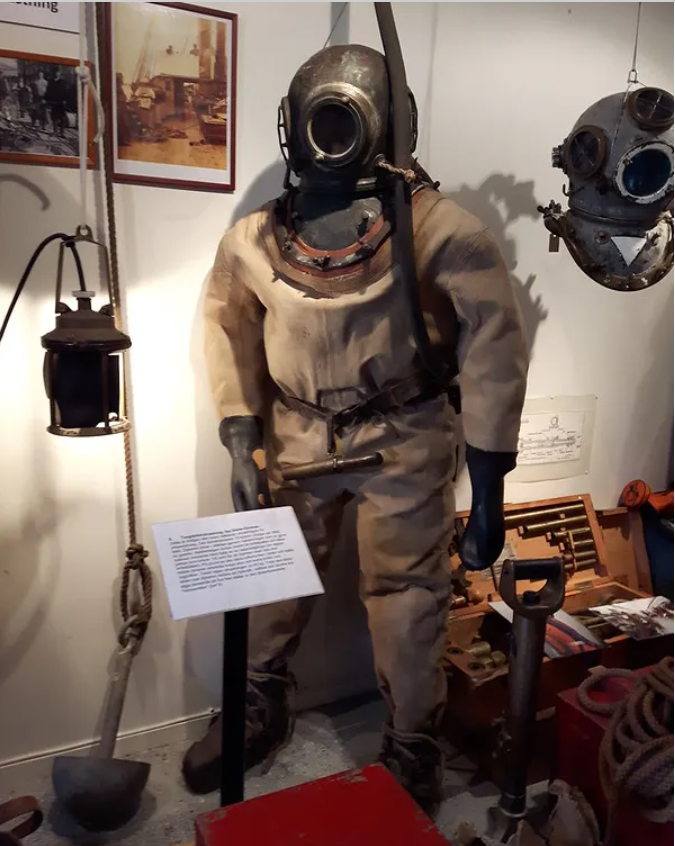
In addition to the diving tank itself, the collection contains hundreds of other diving equipment. They have some exclusive items in their collection. The association buys many historical objects but also receives many donations. There are military, professional and recreational diving sets available. They have one of the first dry suits, diving helmets, various vests, an extensive collection of underwater cameras, dozens of regulators, some underwater scooters,… The diving tank house in Stockholm is a place where divers can really enjoy themselves!
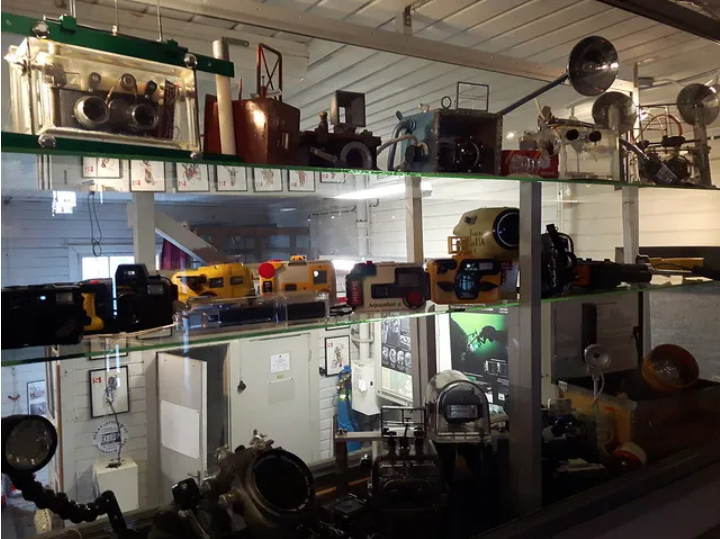
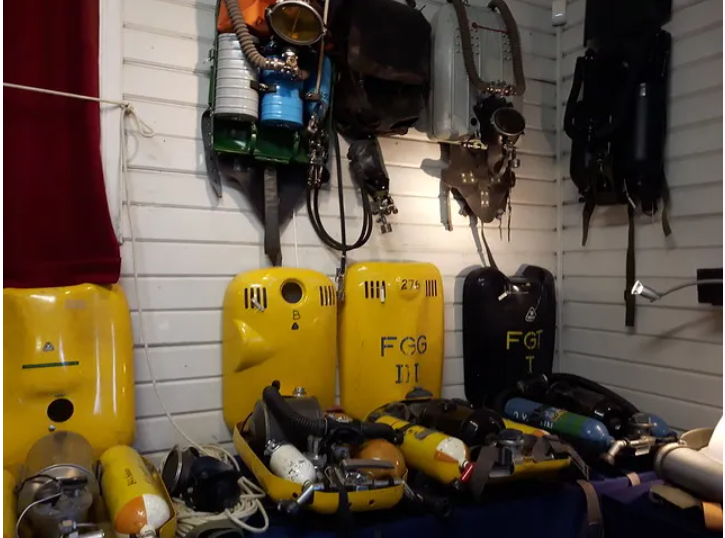

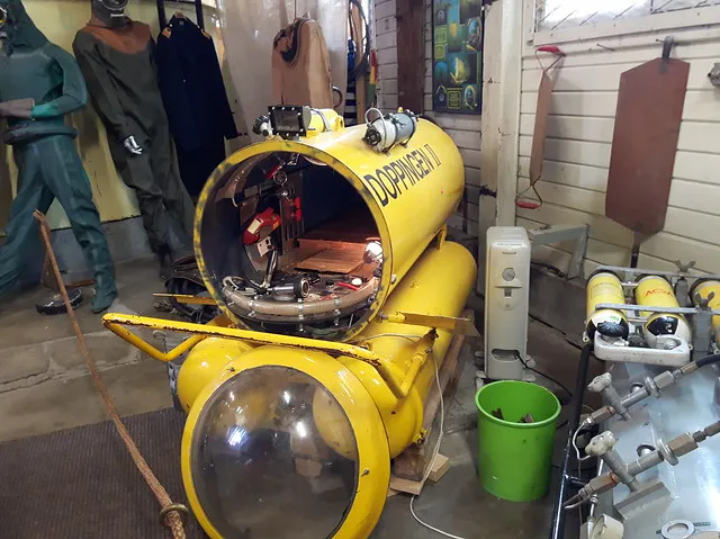
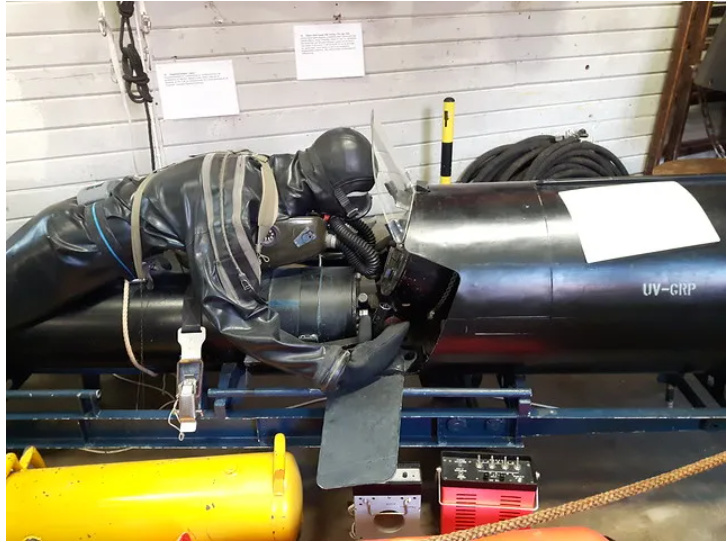
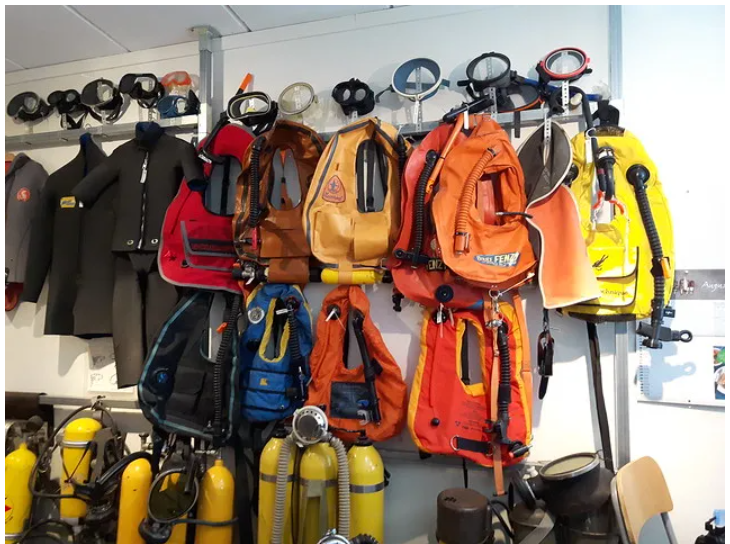
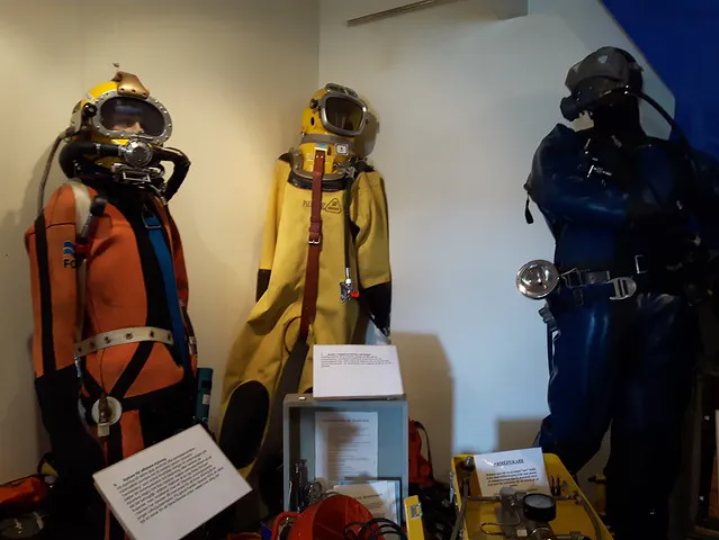
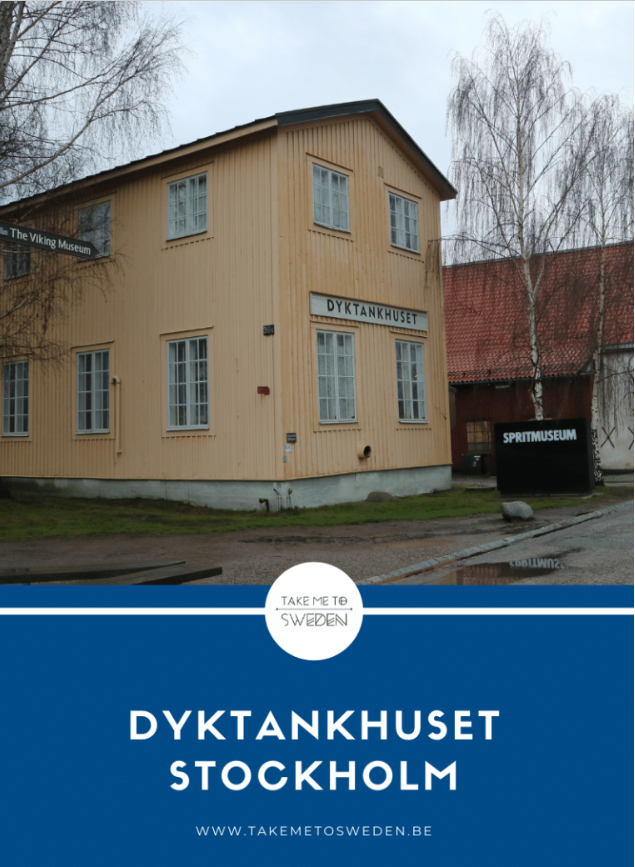
Welcome!
Looking forward to meeting you at one/some of our events during the year!
Swedish Diving History Association

